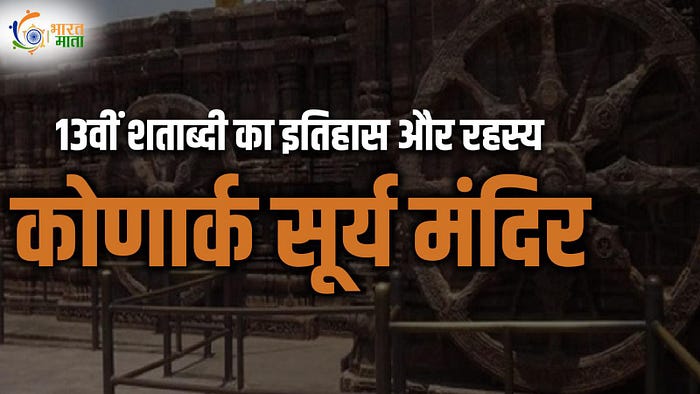With the death of religion, this temple was considered desecrated, which is why no worship of Lord Sun has ever taken place here. So, what exactly happened that no worship was ever performed at the Sun Temple? Let us find out.

The Sun Temple at Konark is one of India’s most extraordinary monuments, renowned for its architectural brilliance and deep religious significance. Constructed in the 13th century by King Narasimhadeva of the Ganga Dynasty, the temple represents the pinnacle of Orissan temple architecture. Designed as a massive chariot with seven horses and twelve wheels, it is an awe-inspiring representation of the Sun god, Surya, traversing the heavens. The temple’s structure, fashioned from intricately carved stone, serves as a marvel of design, symbolism, and craftsmanship. Located on the eastern coast of India, approximately 35 kilometres from Puri and 65 kilometres from Bhubaneswar, the Sun Temple is set against the backdrop of the Bay of Bengal, providing a serene yet imposing presence.
Sun Temple Konark: Mythology, Symbolism & the Name ‘Konark’
The name “Konark” is derived from two Sanskrit words: “Kona” (corner) and “Arka” (the Sun), which reflect its sacred connection to the Sun god. Wikipedia+1 This temple’s mythological roots trace back to the legend of Lord Vishnu’s defeat of the demon Gyasur. After the battle, Vishnu placed his divine symbols — his conch at Puri, his discus at Bhubaneswar, his mace at Jajpur, and his lotus at Konark — to commemorate his victory. As a result, Konark became a site of immense religious importance. The temple’s mythological legacy is further enhanced by the story of Samba, the son of Lord Krishna. According to legend, Samba was cursed with leprosy and sought a cure by performing twelve years of penance at Mitravana, near the confluence of the Chandrabhaga River and the sea. He ultimately appeased Surya, the healer of skin diseases, who cured him. In gratitude, Samba decided to build a temple in Surya’s honour and discovered a statue of the Sun god, crafted by the divine architect Viswakarma. This myth solidified Konark’s status as a sacred site and underscored the Sun god’s pivotal role in the lives of the people of Odisha.
Architectural Grandeur & Religious Significance
The worship of the Sun god has ancient roots in Indian culture, dating back to the Vedic period. Surya was regarded as the supreme source of life and energy, symbolizing health, wealth, and prosperity. His importance was particularly evident in Odisha, where he was worshipped as a primary deity, alongside Mother Earth (Dharitri Maata). The Sun Temple at Konark stands as a testament to this long-standing reverence for Surya. Intoday+1
The temple is a masterpiece of architecture, sculpture, and design. Its layout is a symbolic chariot of the Sun god, with twelve intricately carved wheels on each side, each measuring about three metres in diameter. These wheels are not merely decorative but represent the passage of time, symbolizing the twelve months of the year and the cycle of the seasons.
The temple’s walls are adorned with sculptures depicting various scenes from daily life, divine narratives, and the cosmic order. These carvings provide a detailed insight into the culture, society, and religious practices of 13th-century Odisha. Wikipedia Between the wheels, the temple’s base plinth is decorated with reliefs of lions, dancers, musicians and even erotic groups, which reflect the advanced artistic expressions of the period.
The temple complex is divided into several spatial units, each serving a distinct religious and functional purpose. The principal sanctuary, or vimana, once crowned with a towering shikhara, now stands in ruins, its original splendour lost to time. To the east of the vimana is the audience hall (jahamogana), and further east stands the natmandir (dance hall). These structures, though damaged, continue to convey the grandeur of the original design. The temple is also surrounded by smaller shrines, dedicated to various deities, including Shiva and Durga, reflecting the multi-faceted nature of religious worship at Konark.
The Mystery: Why Was No Worship Ever Performed?
Here is the complete information about this temple — but what is the mystery that has caused no worship to be performed here? It is said that when this temple was being constructed, the daughter of the chief architect committed suicide in the temple. After this incident, a ban was placed on worship and any religious rituals at the temple. Due to this, no worship has ever been performed at the Konark Temple to this day.
There is another mystery about the Konark Sun Temple. It is said that a 51-metric-ton magnet was installed on top of the temple. Because of this, when ships used to pass through this route, they would get lost due to the magnetic influence. Some ships would even get drawn towards the shore by themselves. The compass of the ships would stop working. As a result, the sailors of that time removed the magnet from the temple. This legend contributes to the temple’s aura of mystery.
Konark is recognised for its exceptional artistic achievement, which led to its inclusion in UNESCO’s list of World Heritage Sites. The construction of the temple, involving 1,200 artisans over twelve years, is an impressive feat of labour and commitment. The sculptural artistry, architectural innovation and religious significance of the temple make it an invaluable cultural heritage site. Its grandeur is matched by its historical importance, as it provides a physical link to the spread of Surya worship in India, particularly the influence of Brahmanism and tantric practices.
Comments
Post a Comment